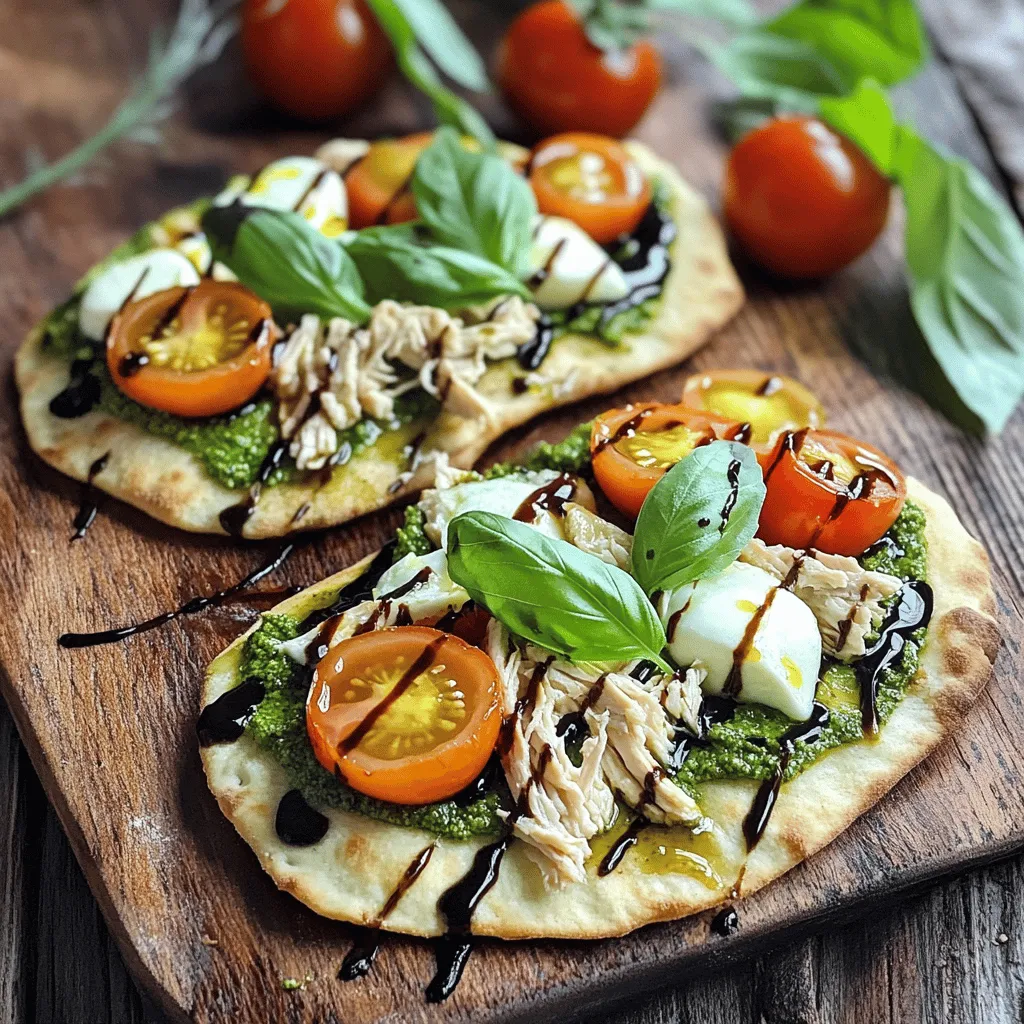Introduction
In recent years, the trend of homemade bread has surged in popularity, as more and more people seek to embrace the art of baking. The comforting aroma of freshly baked bread wafting through the kitchen, the satisfaction of kneading dough by hand, and the delightful anticipation of tasting a warm slice are experiences that many have come to cherish. One standout recipe that embodies this trend is the Sun-Dried Tomato Delight Bread. This unique bread boasts a rich flavor profile, making it perfect for sandwiches, as a side dish, or simply enjoyed on its own.

Sun-dried tomatoes, the star ingredient in this recipe, bring a burst of flavor and a touch of Mediterranean flair to the bread. Their slightly sweet and tangy taste complements the other ingredients beautifully, creating a loaf that is not only delicious but also versatile. Whether you’re serving it at a family dinner, a picnic, or as part of a charcuterie board, this bread is sure to impress.
Moreover, one of the significant benefits of baking bread at home is the control it gives you over the ingredients. Homemade bread is often healthier than its store-bought counterparts, as it can be made without preservatives, artificial flavors, or unnecessary additives. By using fresh, high-quality ingredients, you can create a wholesome loaf that supports your dietary needs and preferences.
The Allure of Sun-Dried Tomatoes
Sun-dried tomatoes are a culinary treasure with a rich history that dates back to ancient times. Originally a preservation method for tomatoes, sun-drying intensifies their natural sweetness while concentrating their flavors. The result is a unique ingredient that can elevate a wide range of dishes, from salads and pastas to, of course, bread.
Nutritionally, sun-dried tomatoes are packed with vitamins and minerals. They are an excellent source of vitamins C and K, potassium, and antioxidants, making them a healthy addition to your diet. When incorporated into bread, they not only add depth and character but also contribute to the overall nutritional profile of the loaf.
In this Sun-Dried Tomato Delight Bread, sun-dried tomatoes blend seamlessly with other ingredients, enhancing both the taste and texture. Their chewy consistency provides a delightful contrast to the soft crumb of the bread, while their vibrant color adds visual appeal. When paired with ingredients like fresh basil and Parmesan cheese, sun-dried tomatoes create a flavor journey that transports you to the sun-drenched hills of Italy with every bite.
Essential Ingredients for Sun-Dried Tomato Delight Bread
To create this flavorful Sun-Dried Tomato Delight Bread, you’ll need a handful of essential ingredients. Each component plays a crucial role in achieving the perfect loaf, contributing to its flavor, texture, and overall success. Below is a detailed breakdown of each ingredient and its purpose:
- All-Purpose Flour: The foundation of any bread recipe, all-purpose flour provides the necessary structure and gluten development for the loaf. Its moderate protein content allows the bread to rise well while maintaining a tender crumb.
- Active Dry Yeast: This ingredient is essential for fermentation and rising. Yeast consumes the sugars in the dough, producing carbon dioxide, which causes the dough to expand and develop a light, airy texture. It’s important to use fresh yeast and activate it properly for optimal results.
- Warm Water: The science behind activating yeast involves using warm water (about 110°F or 43°C). This temperature range is ideal for yeast activation and helps to create the perfect environment for fermentation.
- Olive Oil: Olive oil not only adds flavor to the bread but also contributes to its moisture and tenderness. It helps to create a soft crumb and enhances the overall richness of the loaf.
- Salt and Sugar: Salt is a crucial ingredient in bread making, as it enhances flavor and strengthens gluten structure. Sugar, on the other hand, feeds the yeast, aiding in fermentation and promoting a golden crust.
- Sun-Dried Tomatoes: These are the star of the show, adding richness and depth to the bread. Their concentrated flavor and chewy texture make them a delightful addition.
- Parmesan Cheese: Parmesan cheese contributes a savory, nutty flavor while adding moisture. Its presence enhances the bread’s overall taste, making each slice irresistible.
- Fresh Basil: Fresh basil not only brightens the flavor profile but also adds a delightful aroma to the bread. Its herbaceous notes pair wonderfully with the sun-dried tomatoes.
- Garlic Powder and Italian Seasoning: These ingredients bring a savory kick to the bread. Garlic powder adds depth, while Italian seasoning provides a blend of herbs that complement the sun-dried tomatoes beautifully.
- Black Pepper: A subtle addition that enhances the overall flavor, black pepper adds a hint of heat without overwhelming the palate.
Step-by-Step Instructions for Baking Bread
Preparing the Yeast Mixture
Before diving into the actual bread-making process, it’s crucial to prepare the yeast mixture correctly. This step is vital for ensuring that the yeast is active and ready to work its magic on your dough.
1. Measure the Water: Begin by measuring out the warm water. The ideal temperature is around 110°F (43°C). If you don’t have a kitchen thermometer, you can test it by feeling the water with your wrist; it should feel warm, not hot.
2. Dissolve Sugar and Yeast: In a small bowl, combine the warm water with a teaspoon of sugar. Stir to dissolve, then sprinkle the active dry yeast over the top. Allow the mixture to sit for about 5 to 10 minutes, or until it becomes frothy. This indicates that the yeast is active and ready to be used.
3. Check for Activity: After the resting time, check to see if the mixture has bubbled up and formed a frothy layer. If it has, congratulations! Your yeast is active and ready to help your bread rise. If it hasn’t foamed, you may need to start over with fresh yeast.
Mixing the Dough
Once the yeast mixture is ready, it’s time to mix the dough. This step involves combining the wet and dry ingredients effectively to create a cohesive dough.
1. Combine Dry Ingredients: In a large mixing bowl, whisk together the all-purpose flour, salt, garlic powder, Italian seasoning, and black pepper. This ensures that the dry ingredients are evenly distributed, giving your bread a consistent flavor throughout.
2. Add the Yeast Mixture: Make a well in the center of the flour mixture, then pour in the activated yeast mixture along with the olive oil. The oil will add moisture and flavor to the bread.
3. Incorporate the Ingredients: Using a wooden spoon or your hands, begin to mix the ingredients together. Start from the edges of the well and gradually bring the flour into the wet ingredients. Continue mixing until the dough begins to come together.
4. Add in Sun-Dried Tomatoes, Parmesan, and Basil: Once the dough starts to form, add the chopped sun-dried tomatoes, grated Parmesan cheese, and fresh basil. Gently fold these ingredients into the dough, ensuring they are evenly distributed throughout.
5. Knead the Dough: When the ingredients are well combined, transfer the dough onto a lightly floured surface. Begin kneading the dough by pushing it forward with the heel of your hand, then folding it back over itself. Turn the dough a quarter turn and repeat this process. Knead for about 8 to 10 minutes, or until the dough is smooth and elastic. If the dough is too sticky, sprinkle a little more flour as needed.
These initial steps are crucial to achieving the perfect Sun-Dried Tomato Delight Bread. By understanding the roles of each ingredient and following the mixing and kneading techniques, you’ll set yourself up for success in the baking process. As you progress, the aroma of sun-dried tomatoes and herbs will fill your kitchen, hinting at the delicious loaf that awaits you. Stay tuned for the next steps, where we will cover the rising, shaping, and baking of this delightful bread.

Kneading Techniques
Kneading is a crucial step in the bread-making process that develops gluten, which gives bread its structure and chewiness. Proper kneading creates a uniform texture and helps the dough rise effectively. Begin by lightly flouring your work surface to prevent sticking. Place your dough on the floured surface and use the heel of your hand to push the dough away from you, then fold it back over itself. This technique is often referred to as the “push and fold” method.
Knead the dough for about 8 to 10 minutes, or until it becomes smooth and elastic. You should be able to stretch a small piece of dough without it tearing, which indicates sufficient gluten development. If the dough feels too sticky, sprinkle a little more flour as needed, but avoid adding too much, as it can lead to a denser loaf.
Another technique to consider is the “slap and fold” method, where you lift the dough and slap it onto the countertop. This not only helps develop gluten but also introduces air into the dough, which is beneficial for fermentation.
First Rise: Understanding Fermentation
Fermentation is the process that occurs during the first rise, where the yeast consumes sugars in the dough and produces carbon dioxide. This gas creates bubbles, causing the dough to expand. Understanding this science is crucial for achieving the perfect loaf.
During the first rise, cover the kneaded dough with a damp cloth or plastic wrap to retain moisture. Place it in a warm area, ideally around 75°F to 80°F, for about 1 to 2 hours or until it doubles in size. The ideal environment encourages yeast activity, resulting in a light and airy bread.
You can perform the “poke test” to check if the dough has risen sufficiently. Gently poke the dough with your finger; if the indentation remains, it’s ready for shaping. If it springs back quickly, it needs more time.
Shaping the Loaf
Once the dough has risen, it’s time to shape it into a loaf. Gently punch down the dough to deflate it, which redistributes the yeast and helps achieve an even texture. Turn the dough out onto a lightly floured surface and shape it into a rectangle with your hands.
Fold the long ends of the rectangle towards the center, then roll the dough tightly from one end to the other, tucking in the edges as you go. This rolling technique helps create surface tension, which is crucial for a well-shaped loaf.
After shaping, place the loaf into a greased loaf pan or onto a parchment-lined baking sheet. Cover it again with a damp cloth and let it rise for the second time for about 30 to 45 minutes. This rise is shorter but equally important for developing the final texture of the bread.
Baking to Perfection
The baking process transforms your dough into bread, but it’s essential to know when it’s ready. Preheat your oven to 375°F (190°C) while your loaf is rising. A good indicator of readiness is the appearance of the crust: it should be a golden brown.
To test for doneness, tap the bottom of the loaf; it should sound hollow. Additionally, using a kitchen thermometer can provide precision; the internal temperature of the bread should be around 190°F (88°C) when fully baked.
For an extra crispy crust, consider placing a shallow pan filled with water at the bottom of the oven to create steam during the first part of baking. This steam helps the bread rise further and develop a crunchy exterior. Once baked, remove the bread from the oven and allow it to cool on a wire rack to avoid sogginess.
Presentation and Serving Suggestions
Sun-Dried Tomato Delight Bread not only tastes incredible but also looks stunning. For an appealing presentation, slice the bread into thick pieces and arrange them on a rustic wooden board. To elevate the dining experience, serve it with a drizzle of high-quality olive oil and balsamic vinegar for dipping.
Pair this flavorful bread with dips such as roasted garlic hummus or a creamy spinach artichoke dip. It also complements soups beautifully; consider serving it alongside tomato basil soup or a hearty minestrone for a complete meal.
For a touch of elegance, garnish your bread with fresh herbs like basil or parsley before serving. You can also sprinkle some additional sun-dried tomatoes on top for a pop of color and flavor, enhancing the visual appeal of your dish.
Nutritional Benefits of Homemade Bread
Making bread at home comes with significant nutritional advantages over store-bought varieties. Many commercial breads contain preservatives and additives that can affect health. In contrast, Sun-Dried Tomato Delight Bread is made with whole, fresh ingredients, allowing you to control what goes into your food.
By using wholesome ingredients such as whole wheat flour, olive oil, and sun-dried tomatoes, you increase the nutritional value of your bread. Whole grains provide essential nutrients like fiber, iron, and B vitamins, which are often lost in refined flour. Moreover, the absence of additives means you can enjoy the pure flavors and health benefits of your ingredients.
Portion control is another vital aspect of homemade bread. When you make your own bread, you can slice it to your desired thickness, helping you manage your carbohydrate intake. Enjoying bread in moderation can fit well into a balanced diet, especially when paired with nutrient-dense foods.
Common Mistakes to Avoid When Baking Bread
Baking bread can be daunting, especially for beginners. However, avoiding common pitfalls can lead to successful outcomes. One frequent mistake is not measuring ingredients accurately. Use a kitchen scale for precise measurements, especially for flour, to ensure consistent results.
Another common error is neglecting the proofing times. Rushing the rising process can yield dense bread. Always allow the dough to rise until it has doubled in size for optimal texture.
Over-kneading is also a concern. While kneading is essential, overdoing it can lead to tough bread. Aim for a balance, kneading just enough to develop gluten without exhausting the dough.
Lastly, don’t forget to check your oven temperature. An inaccurate oven can cause uneven baking. Invest in an oven thermometer for reliable readings and adjust your baking time as needed.
The Versatility of Sun-Dried Tomato Delight Bread
One of the best aspects of Sun-Dried Tomato Delight Bread is its versatility. You can easily adapt the recipe to include other ingredients. Consider adding olives for a Mediterranean twist, or herbs like rosemary or thyme for an aromatic flavor. Different cheeses, such as feta or goat cheese, can also be incorporated for added richness.
If you have leftover bread, don’t let it go to waste. Transform it into croutons by cutting it into cubes, tossing them with olive oil and seasonings, and baking until crispy. Alternatively, utilize stale bread for delicious bread pudding, where the flavors of the sun-dried tomatoes can shine in a sweet dessert.
For sandwiches, this bread makes an excellent base. Layer it with fresh vegetables, spreads, and proteins to create gourmet sandwiches that stand out. The possibilities are endless when you embrace the versatility of this delightful bread.
Conclusion
Baking your own Sun-Dried Tomato Delight Bread is not just about creating a delicious loaf; it’s an experience filled with joy and satisfaction. The process allows you to connect with your food and explore flavors while enjoying the therapeutic aspect of kneading and shaping dough.
Embrace the opportunity to experiment with various ingredients and techniques, enhancing your baking skills along the way. The communal aspect of sharing homemade bread with family and friends adds another layer of fulfillment. Whether enjoyed on its own or as part of a meal, this delightful bread brings people together, creating memories and delicious moments that will last a lifetime. So, roll up your sleeves, gather your ingredients, and embark on the wonderful journey of baking your own Sun-Dried Tomato Delight Bread!







Leave a Reply